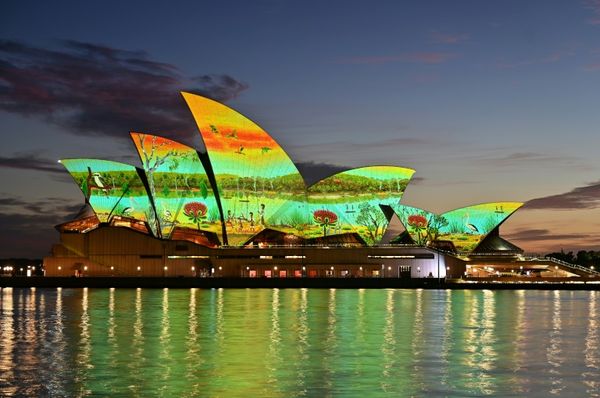Mundra: On 26 January 2001, exactly 16 years back, 19-year-old Shakeel Ahmed Khatri saw the walls in and around his house splitting open. What would later be called the Bhuj Earthquake, measuring 7.7 on the Richter scale had thrown the earth everywhere in Kutch and parts of Gujarat into an angry tumult.
Shakeel, 35, lived then as a part of a 66-member joint family. “All in one kitchen,” he says as he works away in his Mundra workshop when we visit him a fortnight ago. He had walked down to receive us at a mutually agreed central location in the village as the fortified area of old Mundra is not conducive for cabs. Old Mundra is a neglected, filthy village. Stray cattle, chicken on the loose, frail and fatigued stray dogs of all ages, cycles parked around, small village shops selling sundry everyday items, houses with old unpainted facades dot the place. A narrow lane that walks alongside a huge garbage dump leads to Shakeel’s workshop.
Everything inside is messy too because of stains of colour dyes all over. It is all chemical (but industrially safe) dyes, clarifies Shakeel, adding that he must separately show us his experimental work with natural dyes like Indigo, pomegranate bark, onion peel skin, turmeric and some local plants among other herb varieties.
Shakeel’s reference had come up strong and clear in a couple of conversations on local crafts of textiles of Kutch as we travelled in the region’s villages to report on a crafts travelogue, 16 years after the devastating earthquake.
He was apparently that one go-to Batik artist in the region, even though quite a few groups of artisans in old, fortified Mundra (attached to the port town) as well as in neighbouring Mandvi, practice the living tradition of Batik.
Kutch has long been an established centre for Batik, a wax resist dyeing and block printing craft also practiced in Indonesia among some other cultures. A majority of Batik artisans in Kutch — if not almost every single one — are Khatris; Kutchi-speaking Muslims. This particular Khatri family that Shakeel belonged to, for instance, a family of 66 at the time of the Bhuj earthquake had the entire clan working on Batik with the tasks divided among family members.
Today Shakeel has his own unit as the family decided to break up the business in six equal parts of 10 members each in 2005. “We separated happily, there was no rancour,” he tells us. Mentored by his uncle (also his father-in-law) who is 70 years plus and has worked as a dyeing expert for forty odd years, Shakeel says he was fortunate to have been guided in dyeing and printing by the old man and in the strategies of trade by his father. It was, however, design and entrepreneurial education at Kala Raksha Vidyalaya under the tutelage of Judy Frater, a crafts visionary and teacher, an American who made Kutch her home and karmabhoomi that Shakeel’s talent flowered.
“I knew everything that was to know about technique for Batik printing, what I didn’t know was how to think creatively, imaginatively beyond the bunch of patterns we used since childhood,” he says.
At Kala Raksha near Bhuj students would be encouraged to sit outdoors and sketch whatever they saw around in whichever way they interpreted it. Shakeel shows us a colour gradation chart saying that when his father and uncle worked, they would just juxtapose or contrast and combine colours without any rhyme or reason, based purely on what they liked or what they had seen passed down to them. “But at the school, I learnt to differentiate between cool and warm shades, and gradations, how different hues of the same colour can be used on different parts of a fabric.”
Shakeel began to improvise, using deep mustards with earth colours, pale lilacs with leaf greens, working on gradations of black and red, to unearth a repertoire that would soon start reflecting in his fabrics. He lost his bashfulness even in patterns, challenging traditional dots, geometry and floral patterns to create newer shapes and patterns through blocks. Besides cotton textiles as the base and sometimes a handwoven textile, he has begun using chamois satin and chanderi, even tussar silk for Batik printing. He remains essentially a wholesale supplier to stores and clothing units in Ahmedabad but talks of his aspiration as a Batik painter showing us some experimental works where he has used his now sensitised response to colour and pattern to create “moments instead of prints”.
One of the most intriguing aspects of Batik printing is rendering cracks into the design. For this, fabric is folded in specific ways before dyeing and when re-opened post dyeing, it renders “mania-like” cracks in the colour specified by the designer or the dyer. Shakeel showed us a Batik design booklet developed by students of National Institute of Fashion Technology in Delhi called Mania. There can be no better word for it. I personally find this aspect of Batik fascinating. If done imaginatively and non-traditional ways, cracks give us a contemporary, unstructured web or splash of one colour on other creating a style statement.
For all his run down workshop space and cluttered work area, Shakeel, who speaks fluently in Hindi and understands snatches of English is quite progressive in his thoughts. Social media inspires him. Besides Batik painting, he says he is trying to convert a bulk of his work into new untried designs and to natural dyes. “In the next five to seven years, every customer from India or abroad will want natural dyes. I have my eye on that,” he says.
His 70-year-old uncle however, (who can’t remember his exact birth date but is convinced he has been on this earth for at least seven decades) is stunned with social media and digital technology. As my colleagues, both female, shoot videos, take photographs with professional cameras, and I Tweet constantly and Instagram their photos, he looks up at the sky in a fatalist manner and then at us.


















